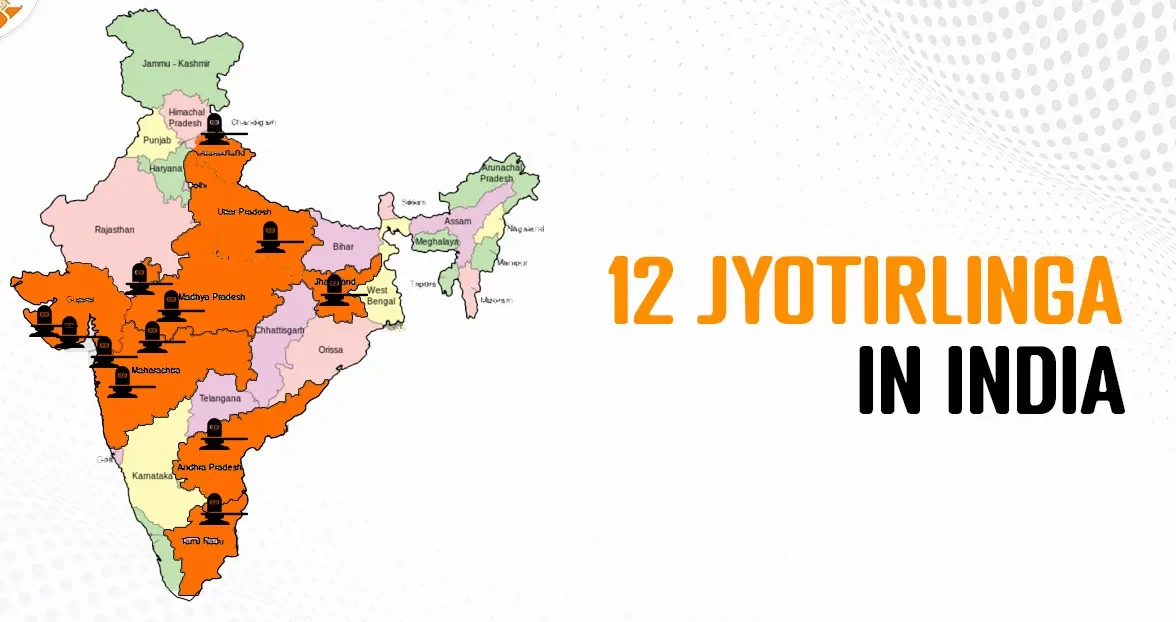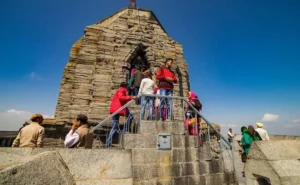Mahadev. Shiva. The Destroyer of Evil. Called by different names but ultimately the Supreme Being. Being a Hindu, most people come across the term “Jyotirlinga” quite a few times while growing up. Shiva’s Jyotirlinga is highly revered among the Hindus. A Jyotirlinga is a shrine where Lord Shiva is worshipped in the form of a Jyotirlingam. Now you would ask what a Jyotirlingam is? It is the radiant sign of The Almighty. A Jyotirlinga is a holy representation of Lord Shiva. The word ‘Jyoti’ means light and ‘linga’ means sign. Jyotirlinga is the light of Lord Shiva.
Legend
The Legend of the “Jyotirlinga” is mentioned in the Vishnu Purana. When Lord Vishu and Lord Shiva were debating over who is supreme, Lord Shiva had produced a vast pillar of light and asked both of them to find the end of the light in both directions. To which, Lord Brahma lied that he found the end, but Lord Vishnu accepted defeat. Lord Shiva then cursed Lord Brahma that even though he is the creator of the Universe, he won’t be worshipped. And the Jyotirlingas here are believed to have appeared from that infinite pillar of light produced by Lord Shiva.
How Many Jyotirling are There in India?
There are 12 Jyotirlinga in India. It is believed that Lord Shiva first manifested himself on Earth on the night of the Aridra Nakshatra, thus the special reverence for the Jyotirlinga. There is no unique appearance to mark the Jyotirlingas. Many people believe that you can see these lingas as columns of fire piercing through the earth after you reach a high level of spiritual attainment. Originally there were 64 Jyotirlingas out of which 12 are considered to be highly auspicious and holy. The 12 Jyotirlinga temples in India take the name of the presiding deity. Each considered a different manifestation of Lord Shiva. The primary image of all these lingas is the “lingam” representing the beginning and end stambh pillar or the infinite nature of Lord Shiva.
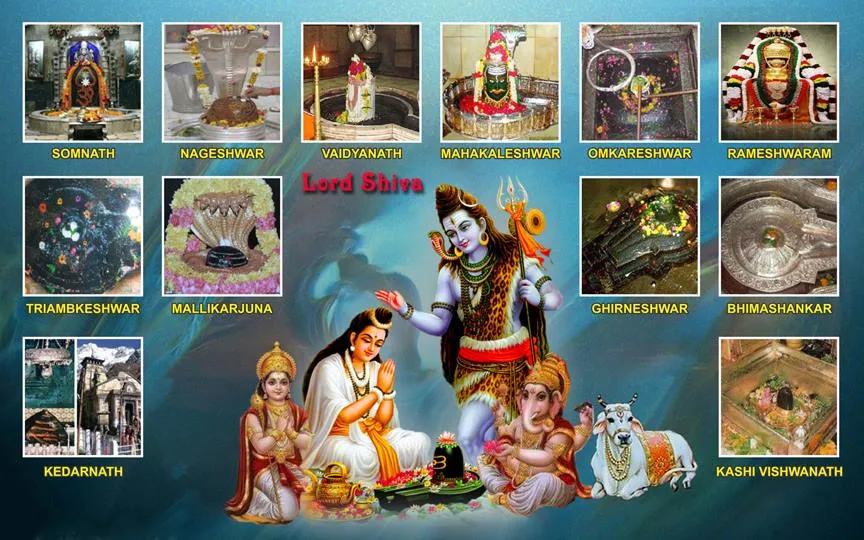
12 Jyotirlingas in India with Their Location:
- Somnath Jyotirlinga in Gir, Gujarat
- Mallikarjuna Jyotirlinga in Srisailam, Andhra Pradesh
- Mahakaleshwar Jyotirlinga in Ujjain, Madhya Pradesh
- Omkareshwar Jyotirlinga in Khandwa, Madhya Pradesh
- Baidyanath Jyotirlinga in Deoghar, Jharkhand
- Bhimashankar Jyotirlinga in Maharashtra
- Ramanathaswamy Jyotirlinga in Rameshwaram, Tamil Nadu
- Nageshwar Jyotirlinga in Dwarka, Gujarat
- Kashi Vishwanath Jyotirlinga in Varanasi, Uttar Pradesh
- Trimbakeshwar Jyotirlinga in Nasik, Maharashtra
- Kedarnath Jyotirlinga in Rudraprayag, Uttarakhand
- Ghrishneshwar Jyotirlinga in Aurangabad, Maharashtra
1.Somnath Jyotirlinga, Gujarat
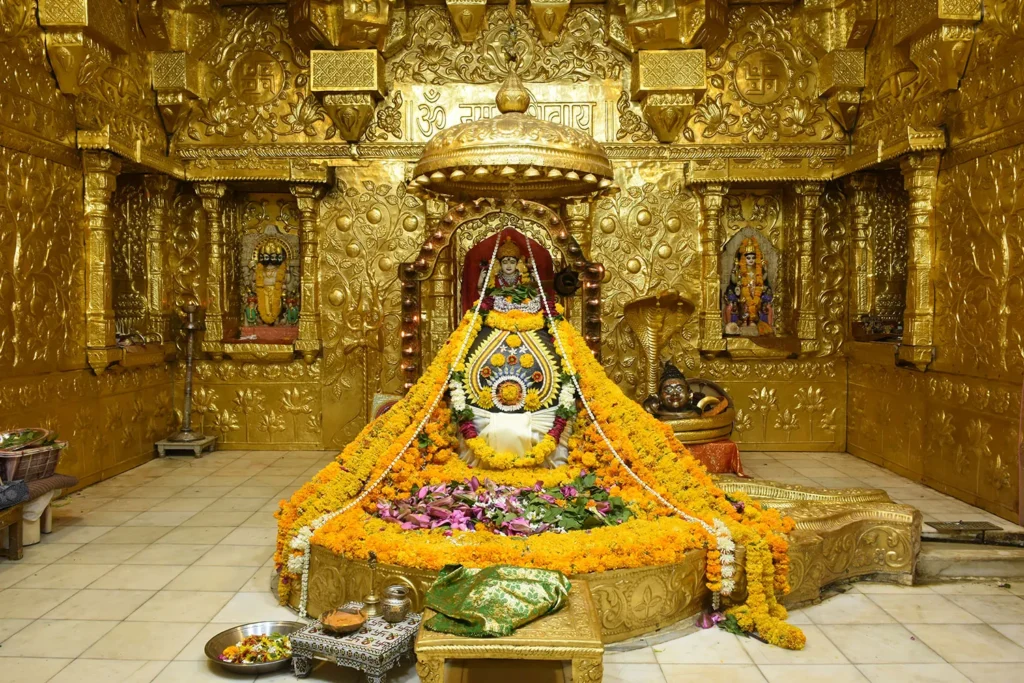
Somnath is the first Jyotirlinga in India among the rest of the Jyotirlinga temples. The temple is built in the Chalukya style of temple architecture. This pious temple is built at the shore of the Arabian ocean on the western corner of the Indian subcontinent. Somnath is among the most revered pilgrimage sites in the country.
According to Hindu mythology, the temple was primarily created by the moon in pure gold and later rebuilt by Ravana in silver later it was built by Krishna in sandalwood and lastly by Bhimadeva in stone.
According to Shiva Purana, Soma married the 27 daughters of Daksha but neglected them. His father-in-law, Daksha thus, cursed him that he would lose his luster and beauty. To get rid of the curse, Soma worshipped Shiva, and his prayer was granted. Since then, it’s been called Somnath, the ‘lord of the moon’. Mahmud Ghazni, a ruler of the Turkic dynasty, invaded the temple many times to loot the gold. The temple is named after the Moon, known as Soma.
Open Timings
The temple remains open for devotees every day from 6 AM to 9 PM. Arti is done thrice a day at 7 AM, 12 PM, and 7 PM. Timing for the light and sound show – ‘Joy Somnath’ is daily from 8 PM to 9 PM in the evening.
How to Reach:
The nearest railway station to Somnath is the Veraval Railway station, which is about 6 km away from the temple. On arrival, you can hire a taxi to reach the temple. The nearest airport is Diu Airport, which is about 80 km away from the temple. You can hire a taxi at the airport to reach the temple.
2.Mallikarjuna Jyotirlinga, Andhra Pradesh
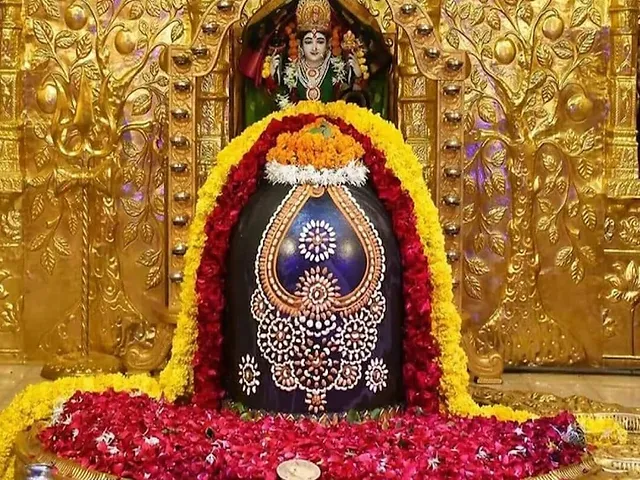
Mallikarjuna Jyotirlinga, also known as Srisailam temple, is situated in the picturesque landscapes of the Nallamala Hills in Andhra Pradesh. Revered as one of the twelve sacred Jyotirlingas of Lord Shiva, it stands alongside the temple of Goddess Bhramaramba, making the site doubly auspicious. Rich in history and religious significance, Mallikarjuna is not only a focal point for Shiva devotees but is also an architectural marvel, reflecting the grandeur of ancient Indian temple art. Along with its spiritual ambiance, the temple’s location offers a serene escape amidst dense forests and the winding Krishna River.
Open Timings:
The temple is usually open from 5:00 AM to 3:30 PM and then from 6:00 PM to 10:00 PM. It’s advisable to check the temple’s official website or get in touch with local authorities for any changes in timings or special events.
How to Reach:
The closest railway station is Markapur, situated around 85 km from Srisailam. Buses and taxis are available from the station to the temple. Srisailam is well-connected by road. State-run buses from major towns and cities in Andhra Pradesh, like Hyderabad, Tirupati, and Vijayawada, frequently ply to Srisailam. The road journey offers scenic views of the Nallamala forest range.
3.Mahakaleshwar Jyotirlinga, Madhya Pradesh
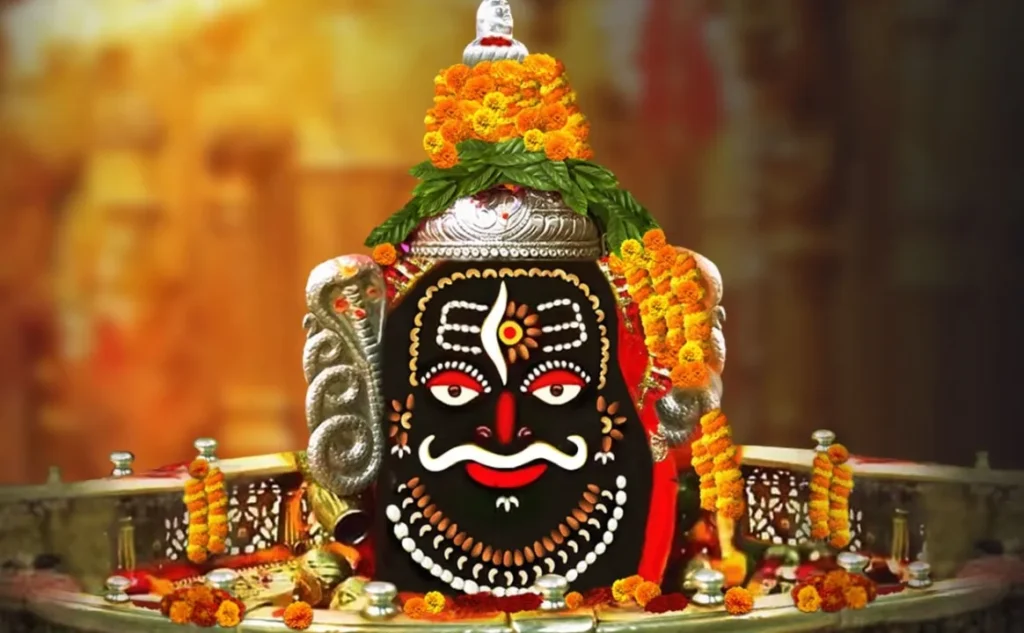
Mahakaleshwar Jyotirlinga, located in the historic city of Ujjain in Madhya Pradesh, is one of the most revered of the twelve Jyotirlingas dedicated to Lord Shiva. Standing on the banks of the Rudra Sagar lake, the temple is renowned for its stunning architectural design and the unique Bhasma Aarti, where the deity is anointed with sacred ash. The temple’s spiritual ambiance, combined with its rich history, attracts not only devotees but also historians and tourists. Revered in ancient scriptures and hymns, Mahakaleshwar stands as a testament to the deep spiritual roots and traditions of India.
Open Timings
The temple remains open for devotees every day from 4 AM to 11 PM. Darshan can be done from 8 AM to 10 AM, 10:30 AM to 5 PM, 6 PM to 7 PM, and 8 PM to 11 PM.
How to Reach:
The nearest railway station to Somnath is Ujjain Junction, which is about 2 km away from the temple. On arrival, you can hire a taxi to reach the temple. The nearest airport is Devi Ahilyabai Holkar Airport, which is about 57 km away from the temple. You can hire a taxi at the airport to reach the temple.
4.Omkareshwar Jyotirlinga- Perched on an Enticing Island
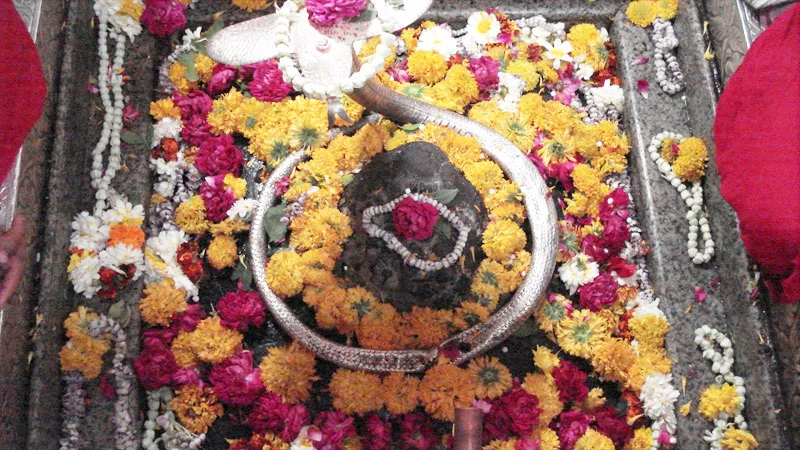
Resided on an Om-shaped island called Shivapuri on the banks of Narmada River, Madhya Pradesh. Denoting the Lord of the Om Sound. Omkareshwar Jyotirlinga is a revered Hindu temple, which is the center of intense faith. The Omkareshwar temple is a magnificent three-storied temple supported by large pillars made up of carved granite stone.
There are two main temples of Lord Shiva here, one to Omkareshwar located on the island and one to Mamleshwar located on the south bank of Narmada River on the mainland. Mamleshwar here is linked to the lord of the immortals. Almost every devotee considers both the temples as equally divine jyotirlinga and visit both as these temples are not far away from each other.
Open Timings:
The temple typically opens around 5:00 AM and closes by 10:00 PM. As ritual and aarti timings might vary, it’s wise to check the temple’s official website or contact local authorities for the most current timings, especially during special festivals or occasions.
How to Reach:
The nearest railway station is Omkareshwar Road (Mortakka) station, about 12 km away from the temple. Taxis and autos are available from the station to reach the temple. Omkareshwar is well-connected by road. Buses run from major cities of Madhya Pradesh like Indore, Ujjain, and Khandwa to Omkareshwar. The roads are in good condition, making it convenient for those opting to drive themselves.
5.Baidyanath Jyotirlinga, Jharkhand
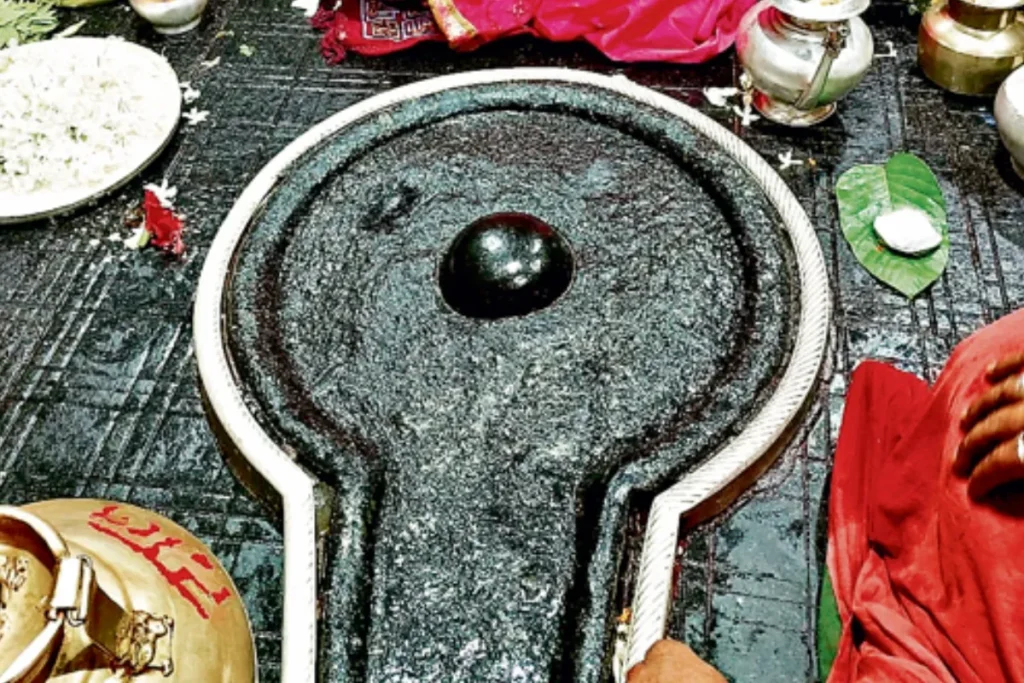
Baidyanath Jyotirlinga, situated in Deoghar, Jharkhand, is one of the most venerated of the twelve Jyotirlingas dedicated to Lord Shiva. This sacred temple is not only a significant religious site but also a marvel of ancient Indian architecture, with intricate carvings adorning its walls. Every year, during the month of Shravan, millions of devotees undertake the arduous pilgrimage called “Shravani Mela” to offer holy water to the deity, exemplifying profound devotion. The temple’s sanctity, combined with the town’s serene atmosphere, offers a spiritual retreat for both devotees and tourists.
Open Timings:
The Baidyanath temple usually opens at 4:00 AM with the ritualistic “Mangal Aarti” and closes around 9:00 PM after the “Shringar Aarti.” However, the timings can vary on special occasions and festivals, so it’s recommended to check with the temple authorities or its official website for the most accurate timings.
How to Reach:
Deoghar has its own railway station, which is connected to several major cities. The station is just a few kilometers away from the temple, and rickshaws, autos, and cabs are readily available. Deoghar is well-connected with major towns and cities of Jharkhand and neighboring states. Regular bus services, both private and state-run, are available. The roads leading to Deoghar are in fairly good condition, making it convenient for those traveling by car or bus.
6.Bhimashankar Jyotirlinga, Maharashtra
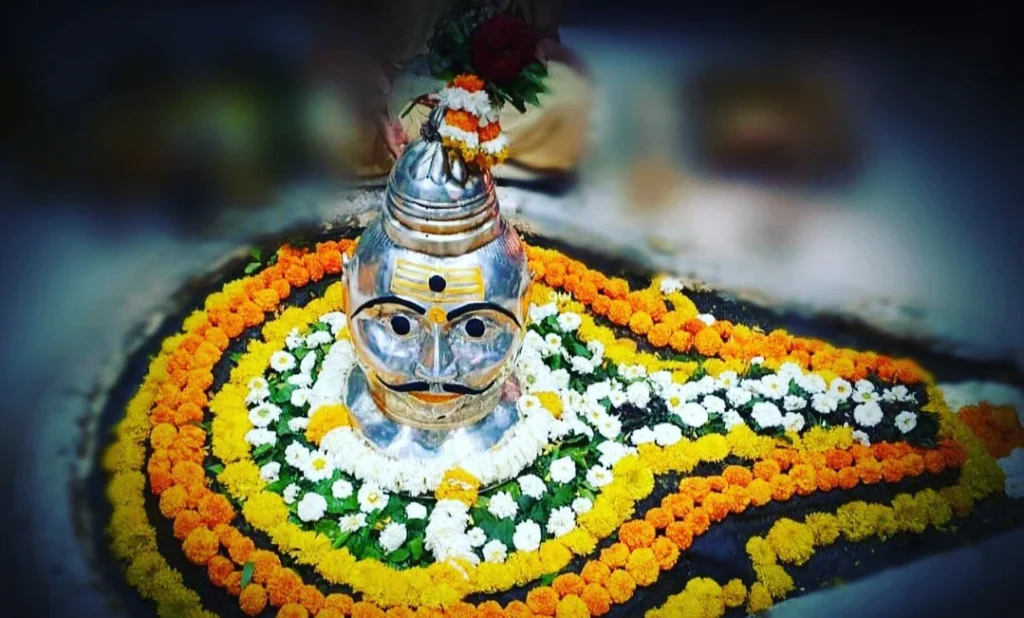
Bhimashankar Jyotirlinga, nestled amidst the lush greenery of the Western Ghats in Maharashtra, is a fusion of spirituality and nature’s splendor. As one of the twelve sacred Jyotirlingas dedicated to Lord Shiva, the temple not only holds immense religious significance but also stands as an architectural marvel with intricate Nagara-style structures. Additionally, the region around Bhimashankar is a designated wildlife sanctuary, making it a haven for nature enthusiasts. The serene ambiance, combined with the melodious chirping of birds and the temple’s spiritual aura, provides a divine and tranquil experience.
Open Timings:
The temple generally opens around 4:30 AM with the morning aarti and closes by 9:30 PM after the evening rituals. However, timings might slightly vary during special occasions and festivals. It’s advisable to consult the temple’s official website or local authorities for precise timings.
How to Reach:
The nearest railway station is Pune Railway Station. From Pune, one can take buses or taxis to Bhimashankar. Bhimashankar is well-connected by road. State transport buses run frequently from major cities like Pune, Mumbai, and Nashik to Bhimashankar. The journey offers picturesque views of the Western Ghats, especially during the monsoon season.
7.Rameshwar Jyotirlinga, Tamil Nadu
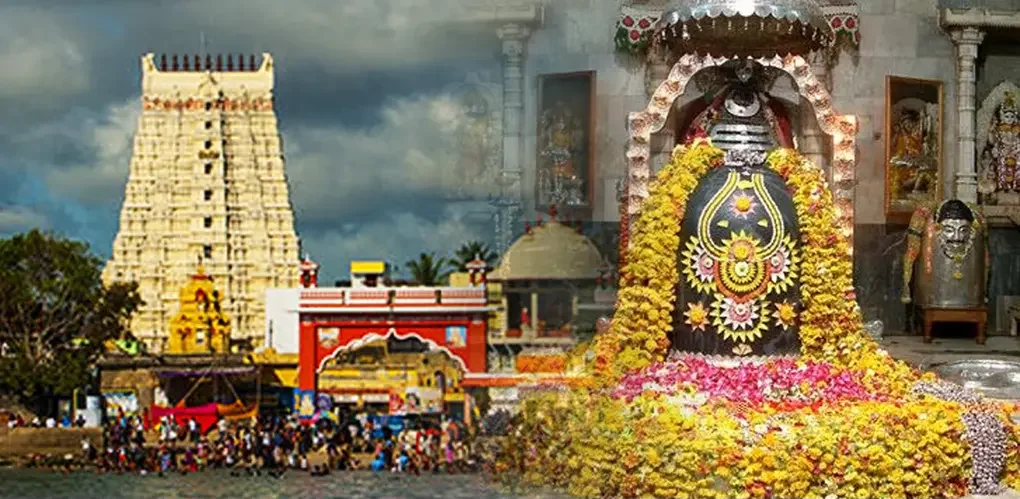
Rameshwaram owns the 7th position among the sequence of 12 jyotirlingas. The temple has a magnificent Dravidian style of architecture. Rameshwaram temple is located in a small town, which is situated in Pamban Island in Tamil Nadu. The special thing about the Rameshwaram temple is that there are twenty-two water bodies present in the temple complex.
According to the common belief, to show respect to Lord Shiva, devotees take a holy bath at these water bodies before Darshan. The Temple has two jyotirlingas, one made by Lord Rama and another brought by Hanuman from Kashi. It is said that the jyotirlinga brought by Hanuman is a replica of the Kashi Vishwanath jyotirlinga.
Open Timings:
The temple remains open for devotees every day in two-shift, which is from 5 AM to 1 PM and 3 PM to 9 PM.
How to Reach:
The nearest railway station to the temple is the Rameswaram Railway Station, which is about 1.5 km away from the temple. On arrival, you can hire a taxi to reach the temple. The nearest airport is Madurai Airport, which is also about 177 km away from the temple.
8.Nageshwar Jyotirlinga, Gujarat
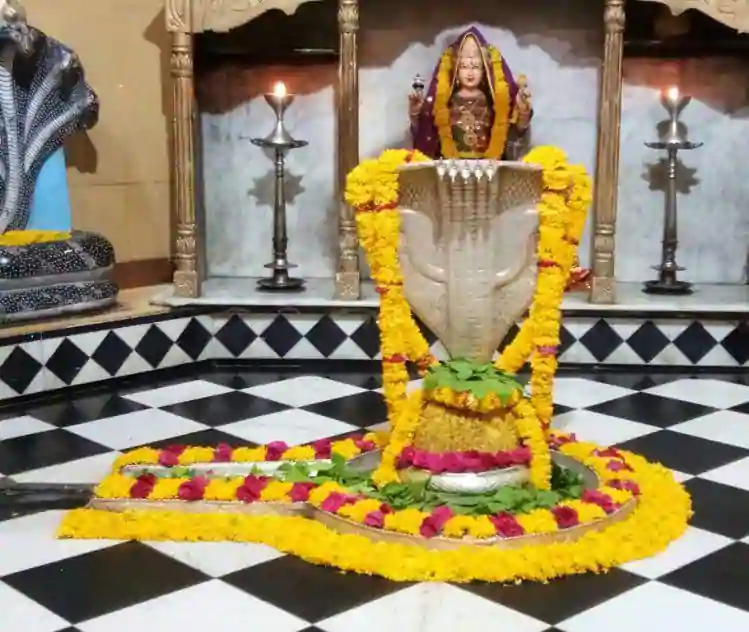
Nageshwar Jyotirlinga, situated near Dwarka in Gujarat, holds a prominent position among the twelve Jyotirlingas dedicated to Lord Shiva. Revered by devotees, the temple is unique with a giant statue of Lord Shiva visible from a distance, standing as a beacon of faith. According to legend, this is the place where Lord Shiva vanquished the demon Daruka, symbolized by the name Nageshwar or “Lord of Snakes.” The temple complex, with its serene ambiance and spiritual energy, attracts pilgrims and tourists alike.
Open Timings:
The temple usually opens at 6:00 AM and closes by 9:00 PM. However, it’s always a good idea to confirm the timings by checking the temple’s official website or contacting local authorities, especially during festivals or special events.
How to Reach:
Dwarka Railway Station is the nearest, situated approximately 17 km from the temple. Upon arrival at the station, one can hire taxis, rickshaws, or avail local transportation services to reach Nageshwar Jyotirlinga. Nageshwar is well-connected by road. State-run buses and private bus services ply regularly between major cities of Gujarat and Nageshwar. The roads are well-maintained, ensuring a comfortable journey for those traveling by car or bus.
9.Kashi Vishwanath, Varanasi
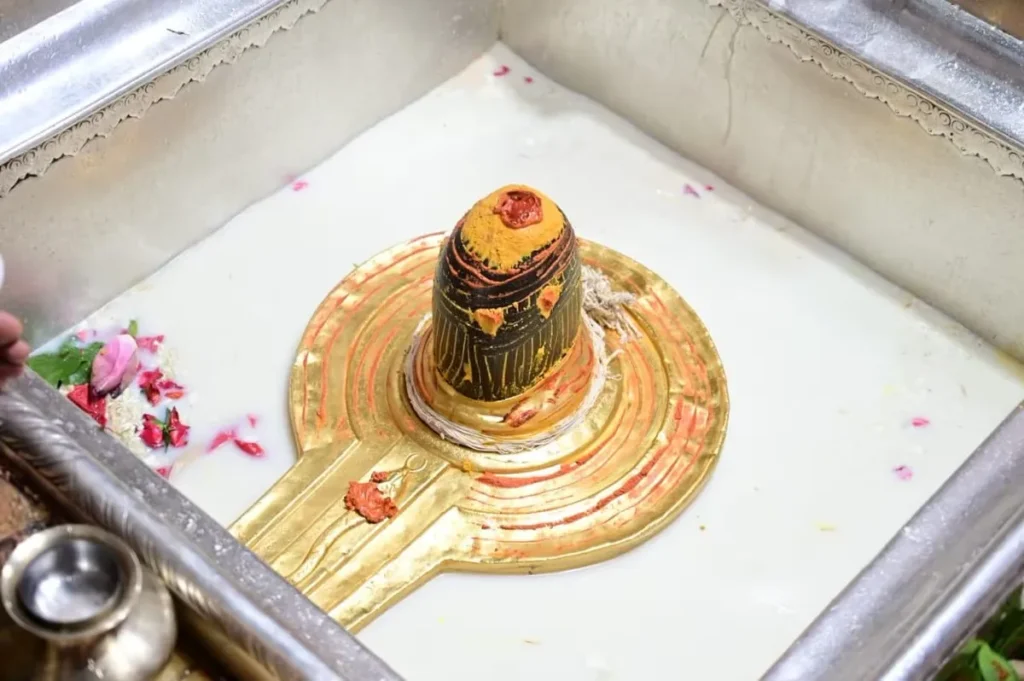
Kashi Vishwanath Temple, located in the spiritual heart of India, Varanasi, stands as one of the most revered religious destinations dedicated to Lord Shiva. Often referred to as the “Golden Temple” due to its resplendent gold-plated dome, this temple holds a special place in the hearts of devotees from all over the world. Positioned along the holy banks of the River Ganges, the temple is not only a site of religious importance but also a place where life and death coalesce in the circle of existence. The resonance of temple bells, the sacred aartis, and the all-encompassing spirituality of Varanasi make Kashi Vishwanath a divine pilgrimage.
Open Timings:
The temple generally opens around 3:00 AM with the Mangala Aarti and closes around 11:00 PM after the Shringar Aarti. However, timings may vary slightly on special occasions and festivals. It’s advisable to refer to the temple’s official website or consult with local temple authorities for the most up-to-date timings.
How to Reach:
Varanasi Junction (often referred to as Varanasi Cantt) is the primary railway station connecting the city to various parts of India. Once you arrive at the station, taxis, auto-rickshaws, and cycle rickshaws are readily available to take you to the temple. Varanasi has an extensive road network and is well-connected with major cities of Uttar Pradesh and neighboring states. State-run buses, as well as private bus operators, provide regular services to and from Varanasi. The city’s roads are usually bustling, so it’s advisable to allow for some extra travel time.
10.Trimbakeshwar Jyotirlinga, Nasik
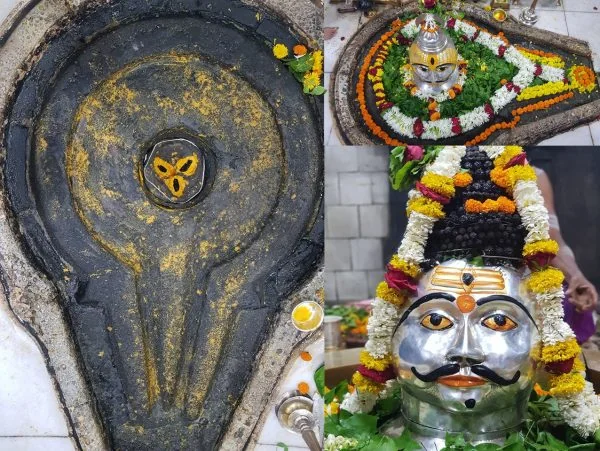
Trimbakeshwar Jyotirlinga, nestled in the picturesque foothills of the Brahmagiri mountains in Nasik, Maharashtra, is one of the sacred twelve Jyotirlingas dedicated to Lord Shiva. This ancient temple, distinguished by its unique architecture, houses a rare linga with three faces symbolizing Lord Brahma, Lord Vishnu, and Lord Shiva. Situated near the origin of the holy river Godavari, the temple complex resonates with profound spirituality and offers solace to pilgrims and visitors alike. With legends intertwined in the tapestry of Indian mythology, Trimbakeshwar is a confluence of divine energy and natural beauty.
Open Timings:
The temple generally opens at 5:30 AM and closes around 9:00 PM. However, timings can shift during special occasions, festivals, and rituals. It’s recommended to consult the temple’s official website or contact local authorities for the most accurate timings.
How to Reach:
Nasik Road Railway Station is the closest major railway station, situated about 29 km away from Trimbakeshwar. Taxis and buses are available from the station to reach the temple. Trimbakeshwar is well-connected by road. Regular state transport buses run from major cities in Maharashtra, including Mumbai, Pune, and Aurangabad, to Trimbakeshwar. The journey by road is scenic, especially during the monsoon season, offering views of the verdant Western Ghats.
11.Kedarnath Jyotirlinga, Uttarakhand

Kedarnath Jyotirlinga, majestically located amidst the snow-clad Himalayas in Uttarakhand, stands as one of the holiest shrines dedicated to Lord Shiva. As a pivotal part of the Char Dham Yatra and one of the twelve Jyotirlingas, the ancient temple of Kedarnath is a symbol of faith and devotion, drawing pilgrims from across the globe. The temple, believe to have been establish by the Pandavas from the Mahabharata and later reviv by Adi Shankaracharya, offers not just spiritual solace but also breathtaking panoramic views. Its remote and high-altitude location combined with its spiritual significance makes the journey to Kedarnath a profound pilgrimage.
Open Timings:
The temple typically opens around 4:00 AM with the morning aarti and closes by 9:00 PM with the evening rituals. However, due to extreme weather conditions in the Himalayas, the temple is open only from April/May to November, with exact dates varying based on the Hindu calendar and weather conditions. Pilgrims should verify the temple’s opening dates for the year they plan to visit.
How to Reach:
The closest railway station is Rishikesh, around 210 km away from Kedarnath. Taxis and buses are available from Rishikesh to Gaurikund. Gaurikund, the last road point, is well-connect to major cities in Uttarakhand. Buses and taxis ply frequently from cities like Dehradun, Rishikesh, and Haridwar to Gaurikund. From Gaurikund, one has to undertake a 16 km trek to reach the Kedarnath temple. Helicopter services are also available for those who wish to avoid the trek.
12.Ghrishneshwar Jyotirlinga, Aurangabad
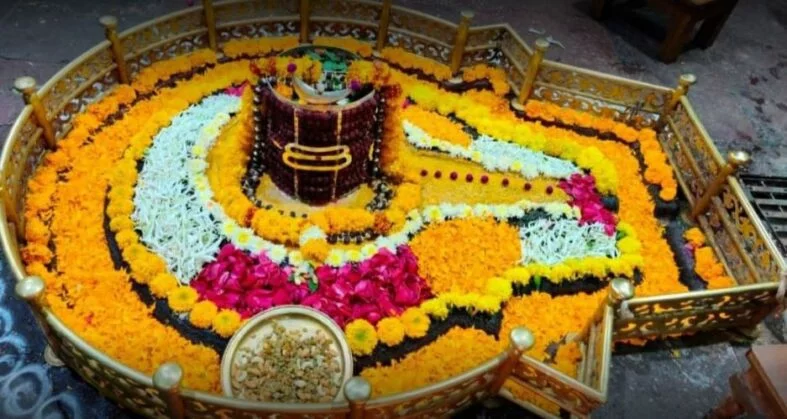
Ghrishneshwar Jyotirlinga, locat near Aurangabad in Maharashtra, is the last of the twelve rever Jyotirlingas dedicat to Lord Shiva. Nestled close to the UNESCO World Heritage sites of Ellora Caves. The temple showcases a brilliant example of medieval Indian architecture with intricately carved designs and sculptures. As per legends, the temple was construct by a devout woman name Kusuma, who was bless by Lord Shiva for her unwavering devotion. Today, the serene ambiance and the spiritual aura of Ghrishneshwar attract devotees and tourists alike.
Open Timings:
The temple usually opens around 5:30 AM and closes by 9:30 PM. However, timings might differ on special occasions and festivals. It’s advisable to consult the temple authorities or the temple’s official website for precise timings during your planned visit.
How to Reach:
Aurangabad Railway Station is the nearest major railhead, situated around 30 km from the temple. Taxis, auto-rickshaws, and buses operate from the station to the temple. Ghrishneshwar is well-connect by road. Regular state transport buses and private buses ply between Aurangabad and the temple. The road network is good, ensuring a comfortable journey for travelers. Given its proximity to the Ellora Caves, many tourists opt to visit both destinations in a single trip.
Also Read: fastest 200 run chase in ipl
These Jyotirlingas Can be Clubb in One Visit
Out of the 12 Jyotirlingas in India. 7 can be visit together since they are locat in the neighboring states of Maharashtra, Gujarat and Madhya Pradesh. This makes it quite easy and convenient to visit all of them together. These 7 Jyotirlingas are:
- Somnath Jyotirlinga, Gir
- Nageshwar Jyotirlinga, Dwarka
- Trimbakeshwar Jyotirlinga, Nasik
- Bhimashankar Jyotirlinga, Pune
- Grishneshwar Jyotirlinga, Aurangabad
- Mahakaleshwar Jyotirlinga, Ujjain
- Omkareshwar Jyotirlinga, Khanda
“Naa aadi naa ant uska, wo sabka naa inka naa unka, wahi shunya hai wahi aekaay, jiske bheetar basaa Shivaay”. Visit these Jyotirlingas in your lifetime and keep chanting “Har Har Mahadev”!

